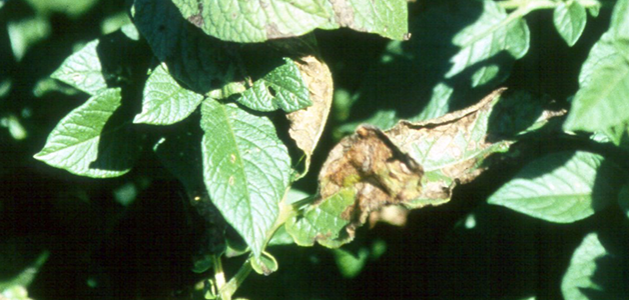Preventing Potassium Deficiency is Key to Potato Yields
Smart fertility management is critical to the success of any potato crop, and in the plants' early growth stages, that's especially true of potassium.
The Need for K
Potatoes require potassium more than any other nutrient, even nitrogen. University of Idaho guidelines recommend 300 K2O pounds of potassium/acre to produce a 450 cwt yield of Russet Burbanks.1 However, two-thirds of that seasonal K requirement is needed early. Six weeks after emergence, young potatoes must vigorously consume soil potassium to activate more than 80 plant enzymes and metabolic processes.
Benefits of K
Potassium affects such key growth functions as tuber quality, root development, moisture uptake, transformation of sugars into starch, and many more. A potassium deficiency in these crucial early stages can reduce a crop's yield and quality. Low potassium also hinders plants' natural resistance to stress and diseases.
What's worse, poor nutrient levels can carry over to future seasons and crops, because plants struggle to compensate for nutrition and deplete the soil even further.
Signs of Nutrient Deficiencies
Clearly, it's important to address the dangers of inadequate nutrition. But how? To start with, growers need to scout for visible signs of fertility issues in their crops.
Potassium deficiencies usually show up earliest in coarse-textured soils, with lower leaves being the first to indicate damage.

Specifically, look for:
- Leaflets with a bluish tint
- Marginal scorch bronzing
- Interveinal chlorosis (yellowing)
- Leaflets may look crinkled
- Small brown spots under leaves
In the case of nitrogen deficiency, be scouting for:
- Stunted plant growth
- Less stem development
- Pale-green leaves
- Slight yellowing of foliage
If a crop has insufficient phosphorus, signs may include:
- Thin shoots
- Fewer stems
- Marginal leaf scorching
- Margins curling forward
- Purpling of leaves
Timing is critical when scouting because once the signs of nutrient deficiency are clearly visible, it means the crop has already been stressed. Don't put it off ― supplemental fertilization may be needed right away.
1 Stark, J., Westermann, D., Hopkins, B. "Nutrient Management Guidelines for Russet Burbank Potatoes." University of Idaho Extension. Bul 840, 2009.


